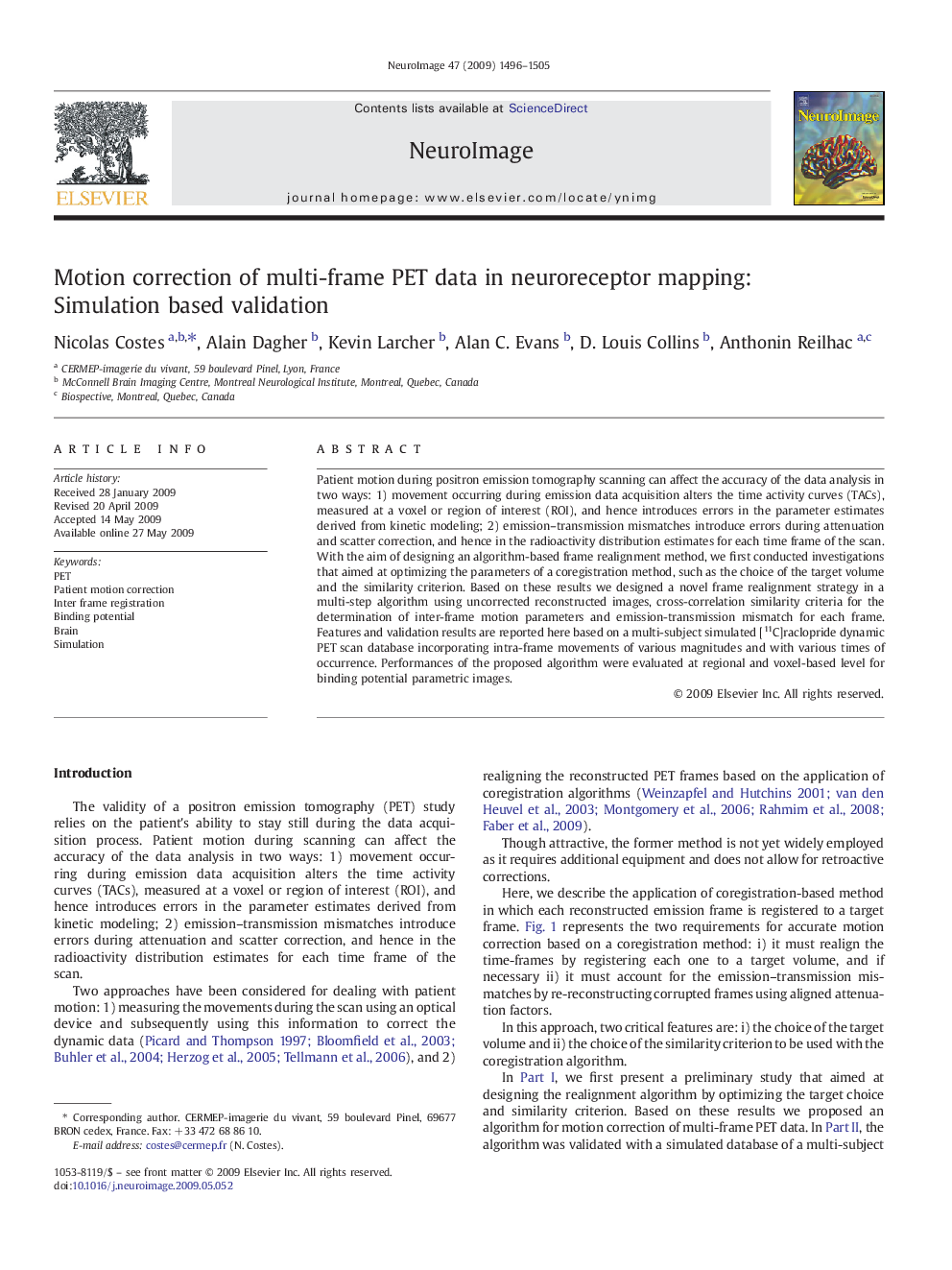| Article ID | Journal | Published Year | Pages | File Type |
|---|---|---|---|---|
| 6038541 | NeuroImage | 2009 | 10 Pages |
Abstract
Patient motion during positron emission tomography scanning can affect the accuracy of the data analysis in two ways: 1) movement occurring during emission data acquisition alters the time activity curves (TACs), measured at a voxel or region of interest (ROI), and hence introduces errors in the parameter estimates derived from kinetic modeling; 2) emission-transmission mismatches introduce errors during attenuation and scatter correction, and hence in the radioactivity distribution estimates for each time frame of the scan. With the aim of designing an algorithm-based frame realignment method, we first conducted investigations that aimed at optimizing the parameters of a coregistration method, such as the choice of the target volume and the similarity criterion. Based on these results we designed a novel frame realignment strategy in a multi-step algorithm using uncorrected reconstructed images, cross-correlation similarity criteria for the determination of inter-frame motion parameters and emission-transmission mismatch for each frame. Features and validation results are reported here based on a multi-subject simulated [11C]raclopride dynamic PET scan database incorporating intra-frame movements of various magnitudes and with various times of occurrence. Performances of the proposed algorithm were evaluated at regional and voxel-based level for binding potential parametric images.
Keywords
Related Topics
Life Sciences
Neuroscience
Cognitive Neuroscience
Authors
Nicolas Costes, Alain Dagher, Kevin Larcher, Alan C. Evans, D. Louis Collins, Anthonin Reilhac,
